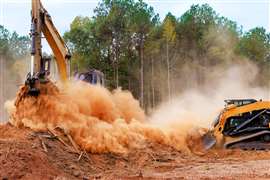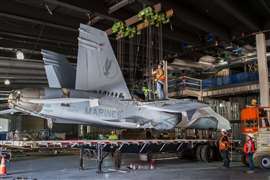Hydrodemolition challenge
15 April 2008
The 1 Km long multi span steel box girder Moerdijk Bridge, over Holland's Diep river near Dordrecht in the southern Netherlands, is a major structure on the vital E19/A16 European highway through Holland and Belgium. The current 45m wide, dual three lane bridge, opened in the late 1970s and built on the original concrete piers of the previous structure, is believed to be one of the most heavily trafficked bridges in Europe, carrying around 120000 vehicles a day.
After a routine inspection revealed fatigue cracking of the deck plate, the Dutch Ministry of Transport designed a € 10,5 million restoration plan. This involves repairing the cracks followed by what is believed to be one of the first major applications of a thin – 50 to 70 mm – 105 MPa high strength concrete wearing course overlay.
Prior to replacement, sections of the existing high strength concrete had to be removed without damaging the steel deck. Contractor Haverkort Voormolen chose hydrodemolition using a Conjet 432 Robot – the largest in the range – for this task.
“We have to remove about 130 m3of this heavily reinforced, extremely high strength concrete, which, due to the uneven deck plate, varies in thickness from 50 to 70 mm. This is the toughest hydrodemolition job I have been involved with,” said project engineer Elwin Roelfsema.
He continued, “Hydrodemolition with the Conjet 432 Robot has proved to be a very safe and effective way of removing the damaged sections of high strength concrete overlay. There is no other method we could have used without damaging the deck plate.”




